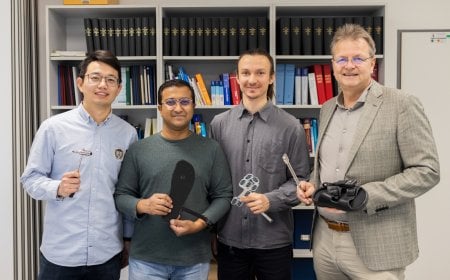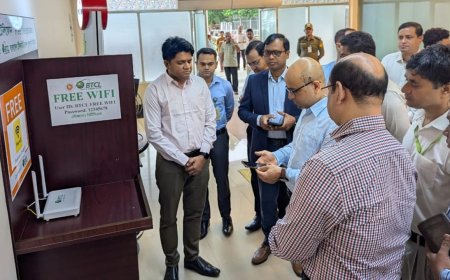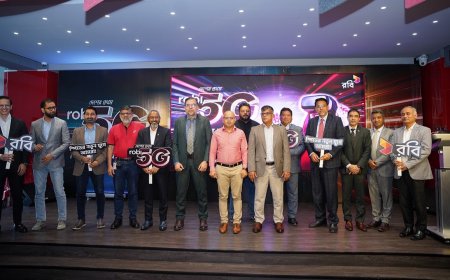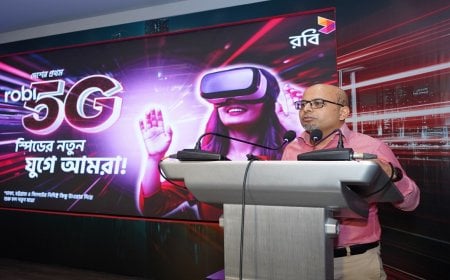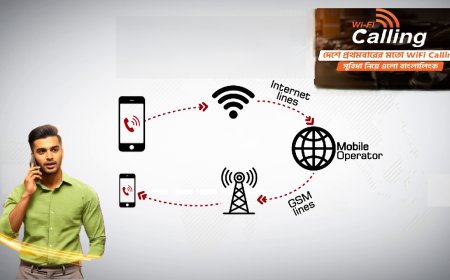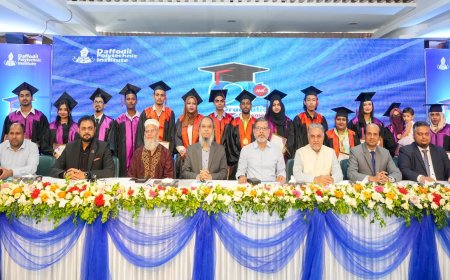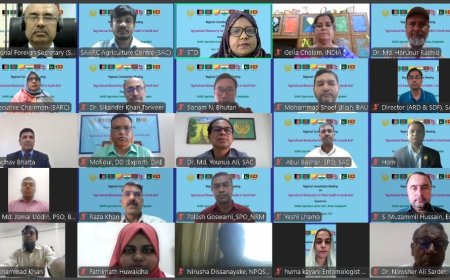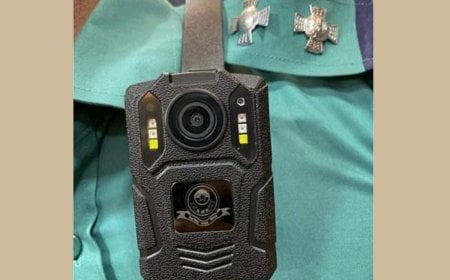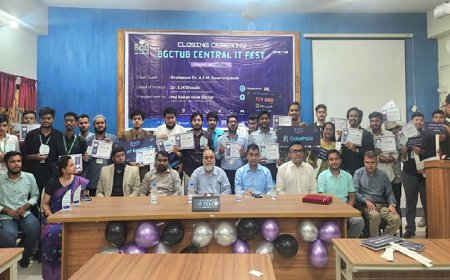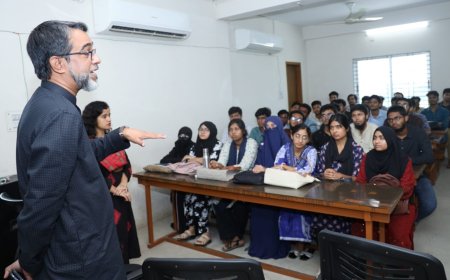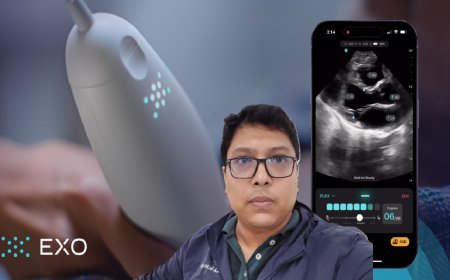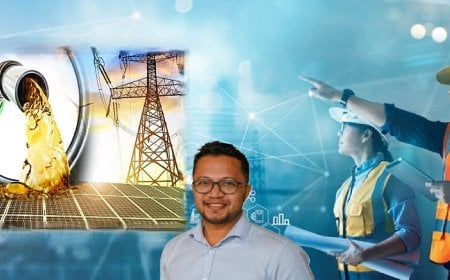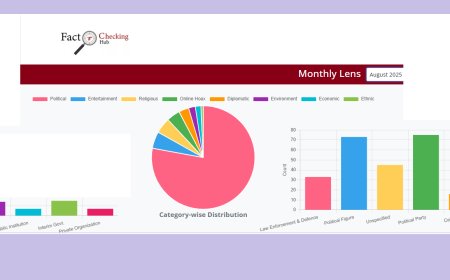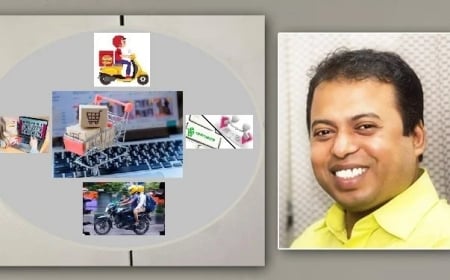Embedded Evolution: Envisioning a Seamlessly Sensorial Society
Safaet Hossain
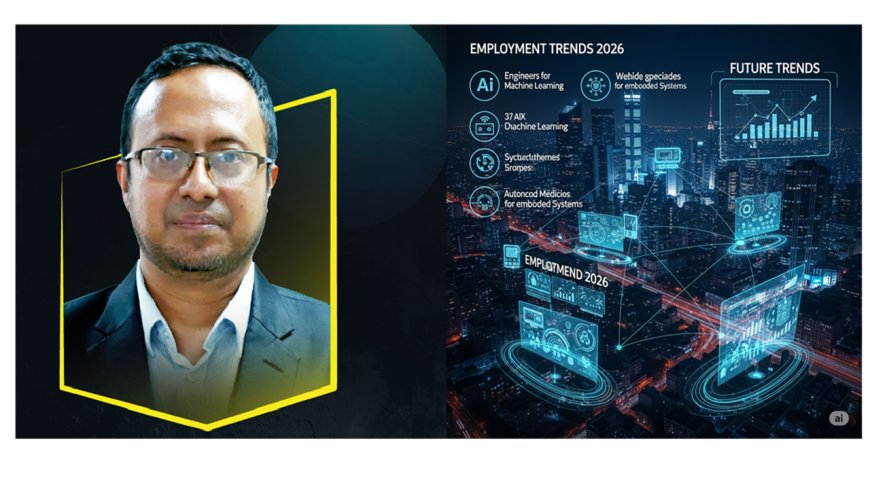
Advances in electronics, wireless communication, networking, cognitive and affective computing, artificial intelligence, and robotics are enabling the devices around us to interconnect and communicate in far more sophisticated ways than ever before. In the near future a tiny processor or sensor will reside inside virtually every object; invisible to the naked eye, it will nevertheless maintain constant links with surrounding apparatus, simplifying and smoothing our everyday lives. Embedded systems have travelled a long way since their origin: a decade ago the idea of a lavatory or toaster that could “tweet” seemed novel, yet today the deep integration of embedded computation— from smart clothing to smart banking— has greatly accelerated technological growth.
The Future of Embedded Systems
The destiny of embedded systems lies in faster communication, vast data capacity, and extremely dense interconnections among devices. The original “seven keywords” that define this future remain highly relevant, although their manifestations have grown even more sophisticated.
Ubiquitous / Pervasive Computing This field focuses on seamlessly interconnected devices that blend into the objects of daily life. From garments to coffee mugs, such artefacts have become routinely “smart.” Whereas smartphones and tablets were once the primary targets of উবিকম্প applications, it is now ordinary for game consoles to interact with calendars, smart‑home equipment to anticipate needs, and public spaces to deliver personalised experiences based on environmental sensing. Coined by Mark Weiser in about 1988, ubiquitous computing has been significantly reinforced by the maturity of cloud computing; Apple’s iCloud, which synchronises data effortlessly across devices, remains a classic example. Sentient computing—a form of ubiquitous computing that uses multiple sensors to understand and respond to its environment—is becoming commonplace.
Intelligent Devices These are “things that think,” objects capable of thought. By combining advanced AI algorithms, cutting‑edge embedded hardware, and machine learning, they replicate cognitive activities once deemed exclusive to living beings. Research initiatives such as MIT Media Lab’s “things that think” push the boundaries of intelligent environments. Beyond smart lighting like iLumi or complex anthropomorphic robots such as Petman for chemical‑leak detection, intelligence is now embedded in everything from autonomous delivery robots to sophisticated medical implants. The very high degree of intelligence in such machines, however, raises serious concerns about security and privacy.
Internet of Things (IoT) Conceptualised in 1999 by Kevin Ashton, the IoT revolution is no longer emergent; it is an all‑pervasive reality. Physical devices—homes, industrial machinery, even urban infrastructure—are routinely connected to the Internet. Powered by ubiquitous cloud computing and pervasive high‑speed connectivity, IoT platforms and operating systems (for example, the earlier Contiki or newer, more advanced frameworks) enable seamless linkage of data and devices. Imagine a present—no longer merely a future—where your smart‑home system adjusts the climate on the basis of biometrics from your wearables, your smart car converses with traffic infrastructure, and your refrigerator orders groceries when supplies run low.
Cyber‑Physical Systems (CPS) Forming a crucial component of the IoT, CPS fuse the physical and cyber worlds through powerful computation and rapid communication. These systems are indispensable for precision‑based tasks such as advanced robotic arms in manufacturing, exploration of inaccessible zones, ultra‑efficient power installations, and simplification of daily routines. Missions such as the Mars Curiosity rover employ intelligent CPS for autonomous navigation and environmental adaptation. Implementing CPS remains challenging because it requires complex blends of hardware and software that continually face onerous issues of privacy, security, and resilience.
Context‑Aware Devices Introduced in 1994 by Bill Schilit, with context defined by Anind Dey as any information relating to the situation of an entity at a given moment, context awareness adds an intelligent layer to ubiquitous computing by making devices more mindful of their surroundings. Businesses employ it to understand customers better and to deliver richer interactive experiences. Both external sensing (visual tracking, location systems) and internal sensing (embedded sensors) are vital for harvesting context‑rich data. Real‑world examples now include medical devices that automatically display patient records based on proximity, smart homes that adjust ambiance on mood detection, and systems that safeguard property by anticipating weather changes.
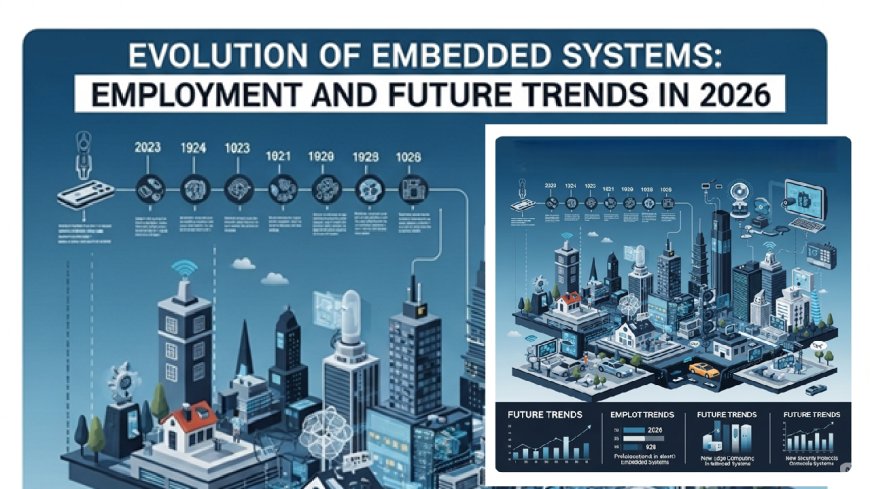
Automatic Contextual Reconfiguration This involves sensing context and reacting dynamically by triggering tasks or altering system settings. The goal of context‑aware devices is to incorporate robust automatic contextual reconfiguration with broad application: smartphones that fall silent automatically in meeting rooms or hospitals, security systems that disable cameras in restricted zones, or industrial applications such as lime kilns that regulate temperature automatically, thereby reducing manual intervention and increasing productivity and quality.
Organic Computing Building on context awareness, organic computing centres on intelligent systems endowed with “Automatic X” properties, meaning they respond to both internal (endogenous) and external (exogenous) changes. These properties include self‑optimisation, self‑protection, self‑healing, self‑help, and self‑configuration. Devices operate autonomously, using machine learning to augment their capability. Fault‑tolerant robots and vehicles designed for extreme terrain and space—such as Boston Dynamics’ BigDog (now in more advanced generations) or shape‑shifting robots like ChemBot—exemplify the concept. Nonetheless, the potential drift toward “Destructive Inteligence” inherent in these advanced self‑X features continues to raise ethical and safety concerns.
Updated Applications for 2026
With notable progress in embedded systems and related technologies, the scope of applications has expanded immensely.
Smart Agriculture An intrinsically complex field owing to factors such as climate, soil conditions, and best practices, agriculture is reaping deep benefits from embedded systems. Precision farming, which optimises farm management for maximum output with minimal input, is being widely implemented across the globe. Initiatives such as Kerala’s “Smart Agriculture” integrate real‑time soil sensors with satellite data and cloud platforms to deliver dynamic farming recommendations, market insights, and post‑harvest advice. Robotic farm equipment, such as sensor‑guided sprinklers, is turning the dream of reducing manual labour into reality for large‑scale operations.
Intelligent Transportation Systems (ITS) The once science‑fiction image of smart, self‑aware transportation is now largely fact. Companies such as Google (now Waymo), Audi, and Toyota have commercialised intelligent transport that greatly enhances driver safety and comfort. Modern aircraft widely employ advanced embedded systems to transmit real‑time component data to central computers—essential for sophisticated tracking and management.
Smart Healthcare Systems One of the most transformative applications of embedded technology, remote medicine and tele‑medicine have become commonplace, particularly benefiting rural areas and saving lives by substantially reducing medical costs. Remote patient monitoring (RPM) now allows physicians to receive real‑time data on vital signs via advanced mobile and wearable technology, far beyond the earlier “Store and Forward” model.
Smart Architecture Highly context‑aware and connected systems have turned smart homes into widespread realities. Buildings incorporate embedded circuits and sensors throughout their structure, allowing extensive control via central interfaces such as smartphones or tablets. Assistive homes enable elderly and disabled persons to live independently by learning behavioural patterns and detecting anomalies or emergencies.
Personal Assistants, Access Applications, Smart Retail, Security and Defence From hands‑free smart glasses and office assistant robots to swarms of diminutive bots gathering data across vast regions, from context‑aware dynamic pricing in retail to “Capture Resistant Environments” that blur unauthorised photography inside secure facilities, embedded systems continue to reshape every sector.
Careers in Embedded Systems
By 2026 embedded systems will truly be ubiquitous, integrated into every aspect of our surroundings—floors, walls, coffee mugs, public transport, cars, homes, offices, even aircraft. Given the enormous array of applications and constant stream of innovative projects, embedded systems remain one of the most desirable fields of study, demanding top‑tier talent. As an embedded‑system engineer, you will stand at the forefront of the most advanced and intricate technologies, revolutionising the way we interact with the world.
Study and Prerequisites Embedded systems represent a formidable combination of modern technologies, encompassing software programming, digital electronics, mobile computing, wearable computing, and augmented reality. A solid grounding in digital electronics is particularly crucial. Leading universities worldwide—MIT, Carnegie Mellon, Stanford, Cornell, the University of Tokyo, and the University of Cambridge—continue to offer robust undergraduate and postgraduate courses in embedded systems, while premier Indian institutes such as the IITs, NITs, and IIITs run postgraduate programmes that typically require a background in digital electronics or electrical engineering.
Specialisation and Career Path Although embedded systems constitute a specialisation within electronics/electrical engineering, further niches—robotics, automotive, mobile technology, wearable computing, augmented reality—abound. Formal courses labelled, for example, “Robotics Embedded System” may be rare, yet students can still pursue research or self‑initiated projects in those domains to demonstrate interest and build competence for prospective employers. Barriers to entry are relatively higher than in the IT sector, largely due to the need for specialised skills and practical experience, and many seasoned engineers recall that their most profound hands‑on learning occurred during their first job.
If you aspire to a career in the embedded‑systems arena, be prepared to become an integral member of teams behind breakthrough inventions ranging from miniature robots to giant Mars rovers. The field offers not merely growth but boundless horizons for investigation. With the relentless advancement of complementary technologies such as wireless communication and artificial intelligence, embedded systems are set to undergo dramatic evolution and fundamental transformation in coming years. For those passionate about electronics and electrical engineering who wish to help shape the technological future, the embedded‑systems domain undoubtedly opens a wise and rewarding career path.
Author: Engineer Md. Shafayet Hossain, Director, Institutional Quality Assurance Cell (IQAC); Associate Professor, Department of Computer Science and Engineering, University of Information Technology and Sciences (UITS)
Note: The opinions expressed in this article are solely the author’s own. Digital Bangla Media bears no responsibility for them. In keeping with a policy of reflecting diverse viewpoints, this piece is published without editorial intervention; any offence or agitation felt remains entirely personal.






